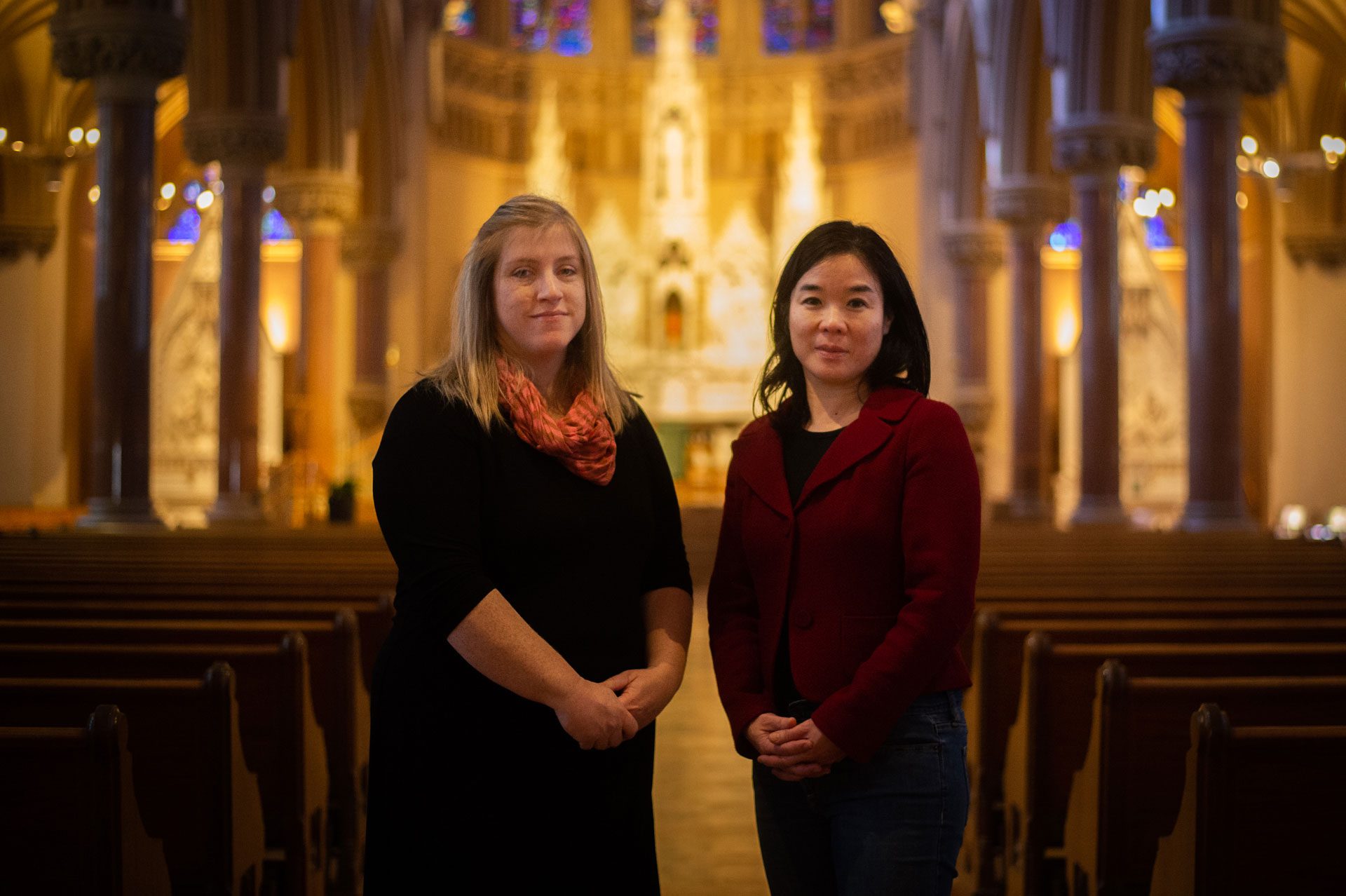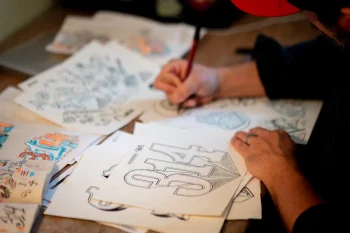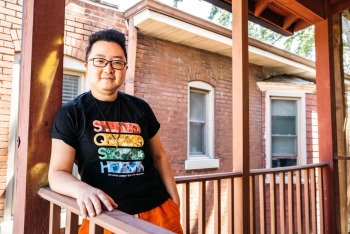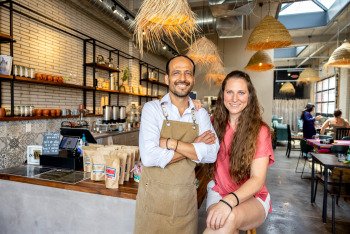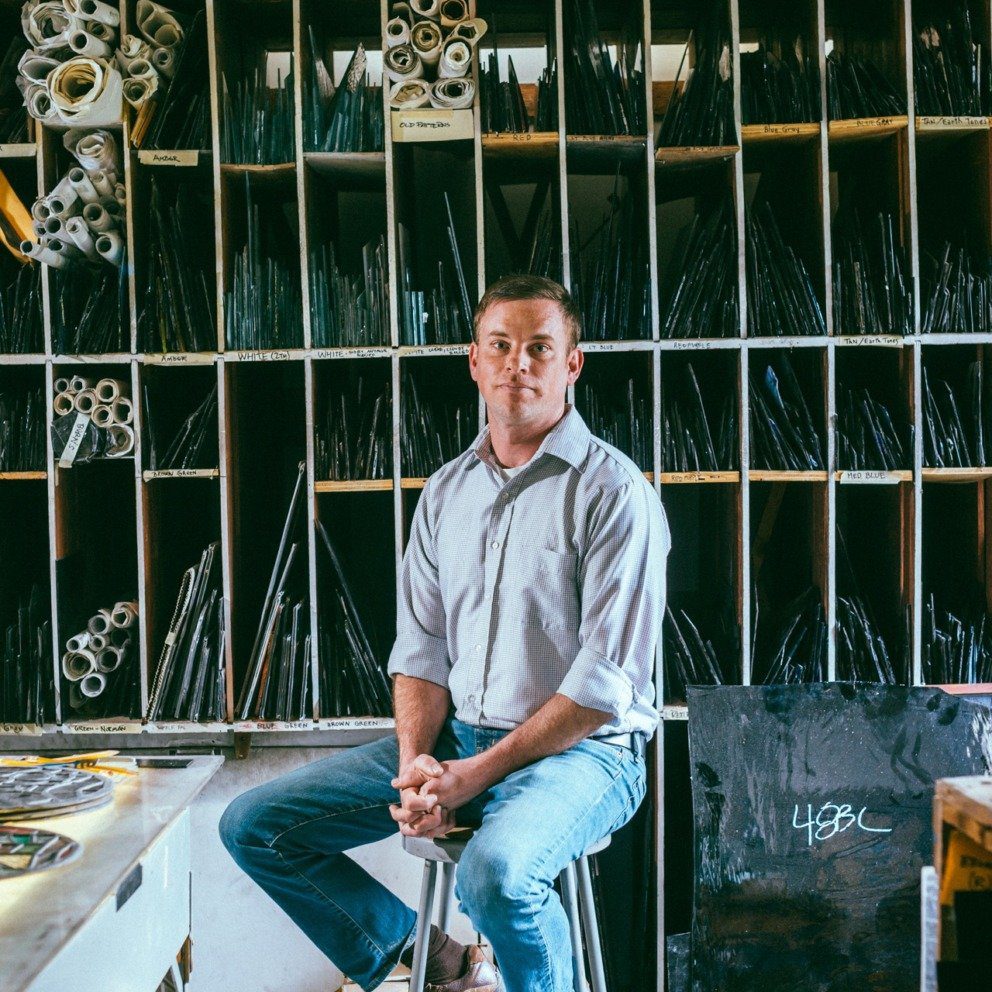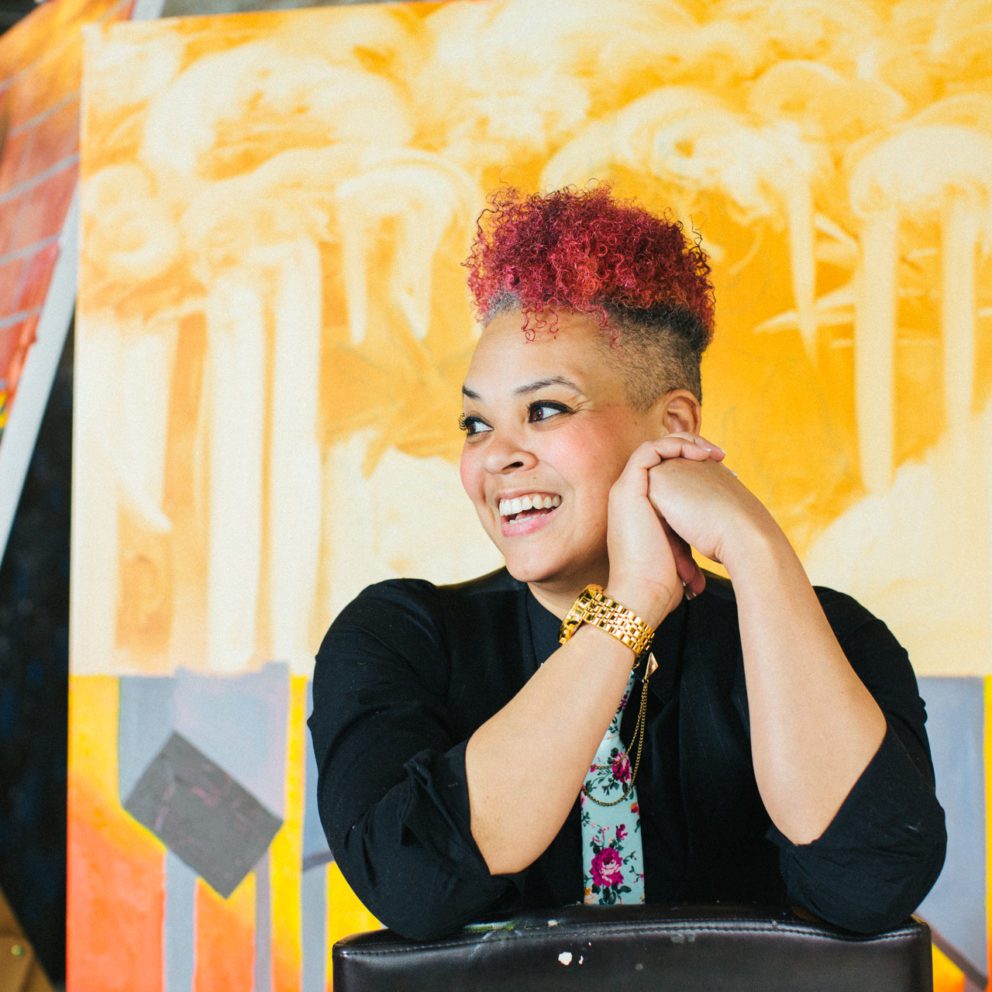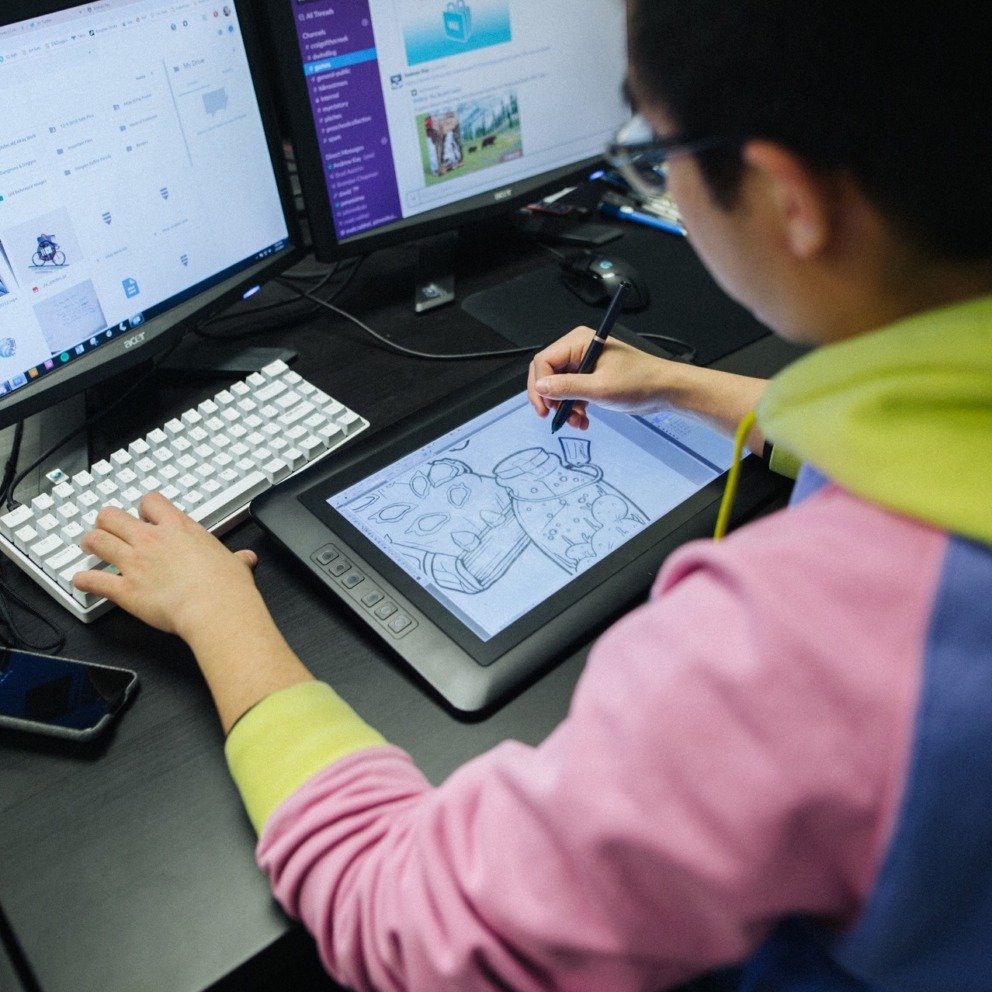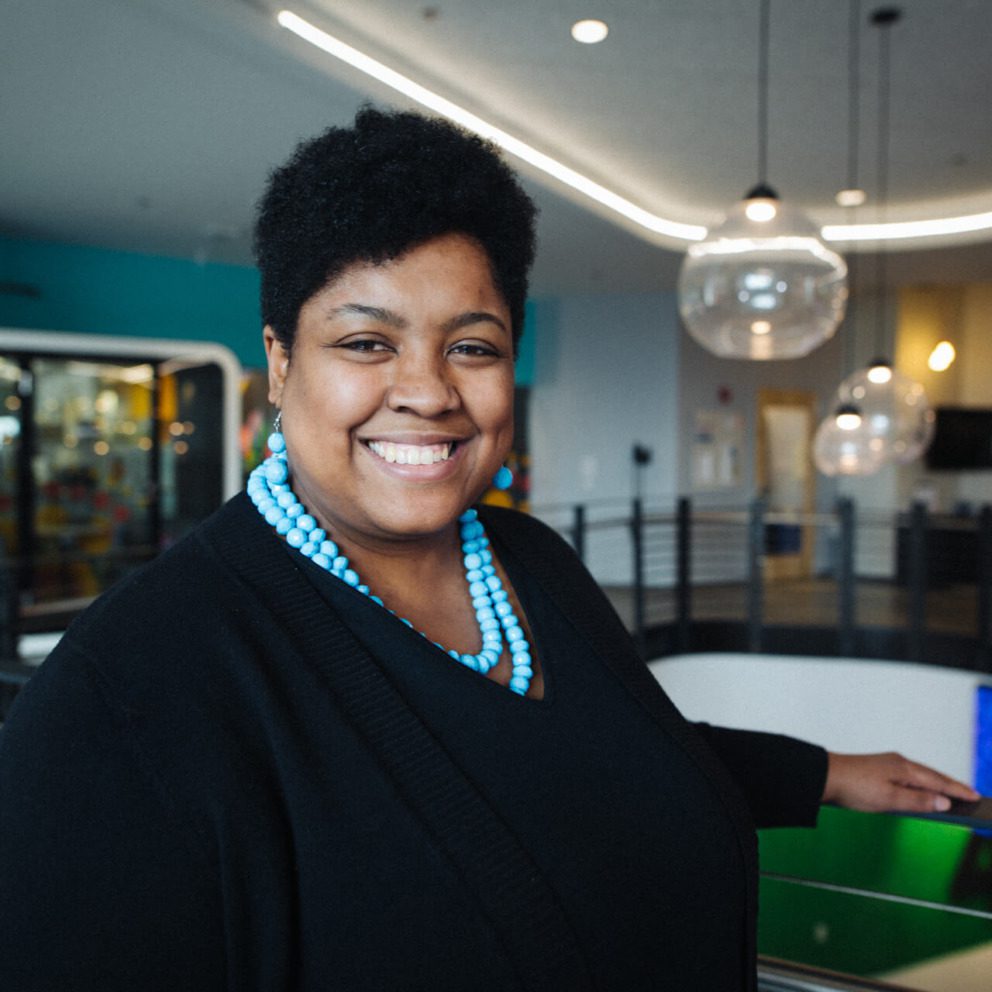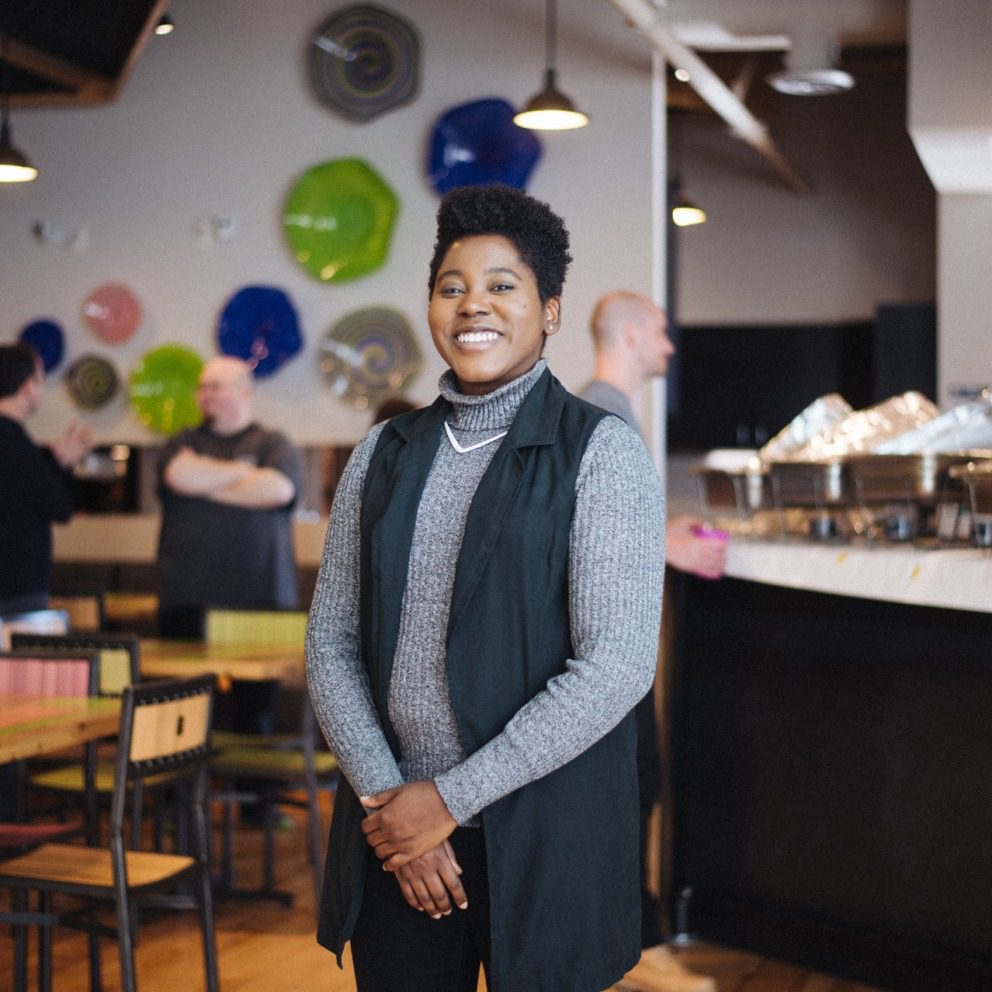Finding the Spirit
SLU professors Pauline Lee and Rachel Lindsey are exploring what religion in unexpected places means to St. Louis’s future.
Wander away from the downtown St. Louis riverfront and you’ll eventually see it. Just south of the Gateway Arch, as the manicured bike paths fade out and the vacant building shells take over, there’s a flood wall covered in graffiti. It’s not on most visitor maps, but it’s special to St. Louis.
Every year, local and international artists convene to legally tag the 1.9-mile Kosciusko Graffiti Wall with symbols and thoughts about life’s difficulties and joys. It’s a colorful celebration of culture that, for some, is akin to a religious experience.
Two Saint Louis University professors would agree that’s exactly what it is.
Pauline Lee, Ph.D., and Rachel Lindsey, Ph.D., are exploring where people experience religion in the St. Louis region and are in the process of creating a digital map and database to show what they’ve found. But in addition to the churches, temples, mosques and other houses of worship one might expect on such a list, the professors also are looking at locations that aren’t traditionally thought of as religious. The Kosciusko Graffiti Wall is included on the professors’ map, as are the Saint Louis Art Museum, the Missouri Botanical Garden and the Saint Louis Zoo. That’s because Lee and Lindsey are interested in “lived religion” – experiences and rituals beyond the anticipated – and exploring what it might mean for St. Louis’s future.
“‘What is lived religion?’ is a question that we pose,” Lindsey says. “We are thinking about religion through the five senses – how is religion seen, but also tasted, heard, smelled and felt by different populations in different places in different times.”
“Religion is not just this idea up here. It’s so much messier and so much more interesting in reality,” Lee adds.
Lee, with a background of researching and teaching Chinese religion, and Lindsey, a historian of religion in the United States, recently received a $400,000 grant from the Henry Luce Foundation to collaborate on a digital database of religion in St. Louis. When they’d first met at SLU, Lindsey was teaching a lived religion course and Lee was teaching a course on world religion that emphasized field work – instructing the students to check out mosques and temples in St. Louis. After learning of the Luce Foundation grant, Lindsey says they realized it was an opportunity to take the momentum they’d been building in their classes and think bigger – to have an effect not just in the world of academia, but to be of use to the city and invite more open conversations.
“The Jesuit mission gives us the flexibility and the freedom to really sink our teeth into these big, meaty questions about religion and public life,” says Lindsey, noting the university’s founding principles.
Through their courses and their research, Lee and Lindsey learned of a stereotype that asserts that St. Louis is homogenous when it comes to religion. But the professors have found that the opposite actually is true. From the small statue of the Hindu god Ganesha at the St. Louis Zoo, to “Jesus Saves” tagged on the Kosciusko Graffiti Wall, to the temples, mosques, meditation centers, churches and cathedrals, Lee and Lindsey assert that St. Louis is extraordinarily diverse in religious ideas.
Even the Saint Louis Art Museum is an example of lived religion even though most people who visit would not say they’re there for a religious experience, Lee says.
“You know, you walk into an art museum, and many people have the same experience as they do walking into a cathedral – the grandeur, the awe,” Lee says. “And it’s by design. The designers of museum architecture had that intent in mind.”
“Part of my effort here is to explore and to demonstrate that regardless of whether or not you identify as religious, religion is part of the city,” Lindsey adds. “It’s in the name, it’s in our civic institutions, it’s in our history, it’s in our laws and practices and customs. It’s inscribed in our street signs.”
Once you’ve heard religion in these terms, it’s impossible not to notice that Lee and Lindsey are right – religion permeates St. Louis in unexpected ways. According to Yelp, St. Louis is No. 2 in the nation as a destination for food lovers, and in this foodie city, there are many intersections between food and religion. St. Nicholas Greek Orthodox Church in the Central West End hosts a packed Greek festival every Labor Day weekend, serving up gyros, baklava and more for over 100 years. And musician Zach Sullentrup recently tweeted, “An extremely St. Louis statement: I just got caught in fish fry traffic,” referring to the region’s abundance of Lenten dinner events.
“The quintessential St. Louis question, ‘Where did you go to high school?’ has often been told in order to, through the sort of parish history, reveal not only what Catholic school did you go to, but how wealthy were your parents? Where did you live? What ZIP code were you from?” Lindsey notes. “And so in that sense, it’s kind of built into city life.”
Examining these instances of religion in the region also means confronting negative parts of St. Louis’s history. “The way that religion has always been defined, it’s somebody claiming a space and making the argument that it is sacred. And so, that introduces questions about who has the authority to define religious space,” Lee says. “Then you’re immediately opening up these sort of histories of power, of race, and class and gender and sexuality.”
Lindsey thinks that it’s the right time to begin these conversations and examine lived religion in St. Louis as it is now, as it was in the past and how it might pertain to the region’s future.
“I think maybe social media has a big part to do with this, that people are kind of opening up conversations that haven’t necessarily been public forever,” Lindsey says. “They’ve been going on behind closed doors and in sort of private correspondence, but now they’re on Twitter, and they’re now a matter of public record. So in that sense, I think the time is right to really pursue this deeply collaborative, intersectional project.”
Lindsey, Lee and artist-in-residence Lauren Pond plan to host their first exhibit on lived religion in St. Louis in 2019 and are asking local residents to share their own examples at religioninplace.org. After gathering more information, the professors intend to launch a digital map and publicly accessible database of their findings.
